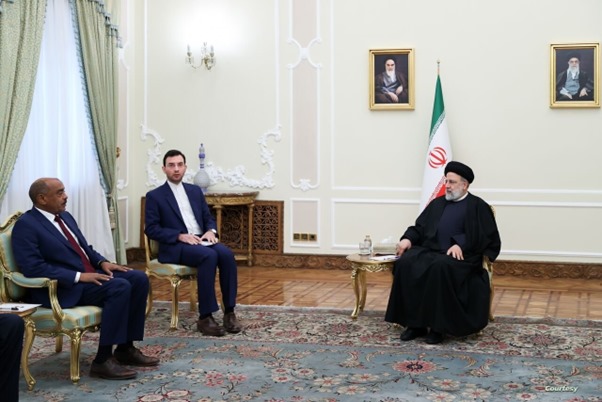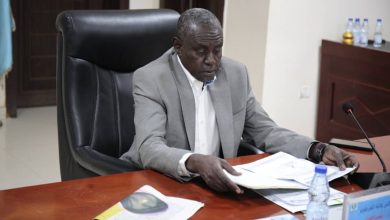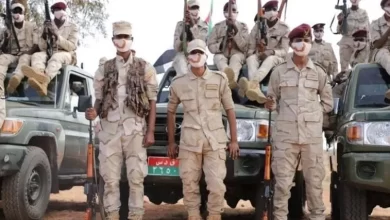Reports
What is Behind the Return of Sudanese – Iranian Relations?

Agencies – Sudan Events
After a rift that lasted 8 years, signs of rapprochement appeared clearly recently between Sudan and Iran, the most recent was an important diplomatic visit, which coincided with Western media reports, stating that Tehran was arming the Sudanese army SAF which is engaged in fierce fighting with the Rapid Support Forces RSF .
Iran had received the Sudanese Foreign Minister, Ali Al-Sadiq Ali, and welcomed “Sudan’s desire to revive relations between Tehran and Khartoum,” according to what the official Iranian news agency “IRNA” reported.
While Al-Sadiq touched on the “past of the ancient relations” between the two countries, the Iranian Foreign Minister, Amir Hossein Abdullahian, affirmed the importance of opening a new page in the path of strengthening Iranian-Sudanese relations,” according to the same agency.
Iranian President Ibrahim Raisi considered restoring diplomatic relations with Sudan “a basis for compensating for lost opportunities and creating new ones.”
This visit followed Western media reports that Tehran supplied the Sudanese army SAF with weapons in its war with the Rapid Support Forces RSF , which sparked a discussion about expanding Iran’s influence on the African continent.
The researcher specializing in African affairs, Mohamed Torshein , expressed his belief that “Iran is eager to cooperate with Sudan.”
He said, “Sudan is an important factor in the axis of Iranian foreign policy,” adding: “Iran aspires to influence Africa, particularly since Sudan has a view of the Red Sea, and this view will enhance Iran’s influence in the region in light of the presence of its allies such as the Houthi group in Yemen.”
As for Sudan, it “needs Iranian military support, as Iranian drones will provide superiority for the army at the expense of the Rapid Support Forces RSF according to Turshin.
But Iranian political analyst, Hussein Royoran, went in another direction, and saw that “restoring relations in light of Sudan’s division does not mean much” for Tehran.
Roryoran said that Sudan “is experiencing an internal war, and Burhan government is trying, in one way or another, to increase its international legitimacy and relations with Iran fall within this context .”
The restoration of relations came after an invitation from Khartoum, which Tehran accepted, said Royoran , who indicated that the new position “will not lead to many changes, particularly since there is a cautious Iranian position in light of (Sudan’s) normalization of its relations” with Israel.
Although Khartoum supported Saddam Hussein in the Iran-Iraq War (1980-1988), that quickly changed after an Islamist-backed coup in 1989 that brought the former president, Omar al-Bashir, to power.
Al-Bashir’s first official visit to Tehran, 5 months after assuming the power , was a reason for rapprochement between the two regimes, according to what the prominent American researcher in Middle East affairs, Giorgio Cafiero, wrote for the Middle East Institute in Washington, DC.
In 1990, Sudan was one of the few Arab countries to support the Iraqi invasion of Kuwait.
At that time, Khartoum severed its relations with the Arab Gulf states and moved to strengthen relations with Iran, which supplied weapons to Sudan while it was waging internal wars.
The Iranian Revolutionary Guard, the Sudanese army, and the paramilitary Popular Defense Forces played important roles in strengthening bilateral relations during the 1990s.
He continued: “Throughout the 1990s and the first decade of the twenty-first century, the growth of Iranian-Sudanese relations in areas including defense, trade, and religion created great discomfort in the capitals of the West and the Gulf Cooperation Council.”
By 2012, Iran began docking warships in Sudanese ports, considering Sudan a strategic foothold in Africa, according to Cafiero.



